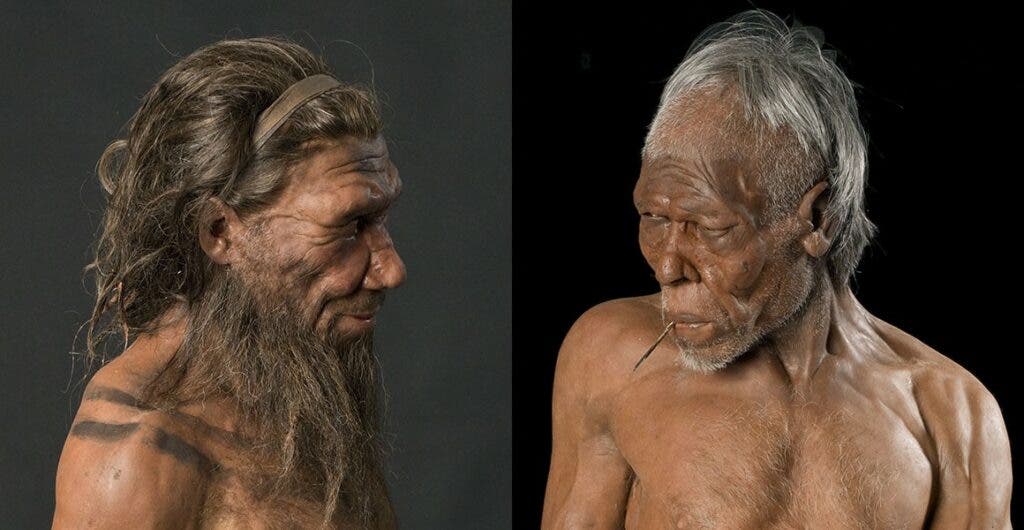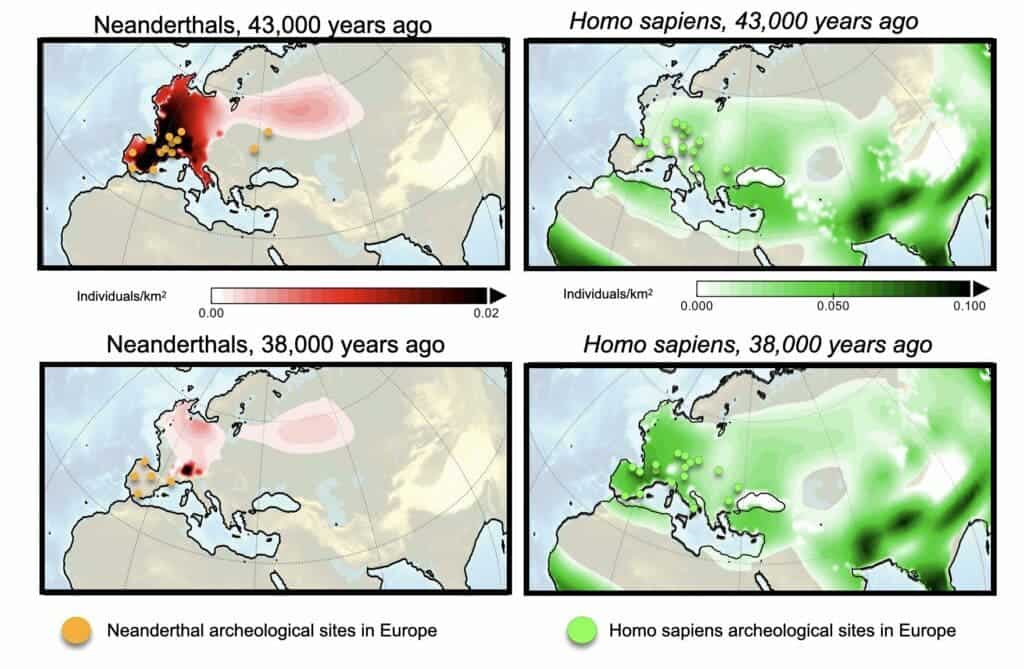Around 40,000 years ago, the northern hemisphere went through an abrupt and prolonged shift in climate that coincided with the extinction of many species. Both Homo sapiens and Neanderthals had to struggle under these conditions but it was only our species that survived, despite the fact that evidence suggests that Neanderthals were perhaps every bit as resourceful as us.
A new study suggests that it was, in fact, competition with humans that sealed Neanderthals’ fate.

Neanderthals had been in Europe and Asia since 300,000 years ago, whereas humans ventured out of Africa into Eurasia through the Middle East around 60,000 years ago.
Before humans entered the picture, Neanderthals were dispersed all around Eurasia and had successfully lived through multiple shifts in climate that caused their food supply to dwindle. Nevertheless, they braved through such obstacles and challenges time and time again.
But despite having survived for hundreds of thousands of years, within a couple of thousands of years from the first contact with humans — which also resulted in interbreeding, as evidence by the fraction of Neanderthal DNA that can still be found in our genomes to this day — the Neanderthals were toast.
For many years, scientists have been debating what the final days of our extinct cousins looked like and what exactly brought about their demise. The climate change factor is obviously important, but so is competition with humans. Which had more weight, though?

This vital question was at the forefront of a new study published by a team of researchers led by Axel Timmermann, director of the IBS Center for Climate Physics at Pusan National University in South Korea.
Timmermann and colleagues devised the first mathematical model that simulates the migration of both Neanderthals and Homo sapiens, as well as their interactions (competition, interbreeding, etc.) in a changing climate.
Their work is based on highly established climate models and takes into account a time-varying glacial landscape and shifts in temperature, rainfall, and vegetation patterns.
The model assumes that both hominins compete for the same food resources and allows a small fraction of their members to interbreed.
“This is the first time we can quantify the drivers of Neanderthal extinction,” said Timmermann. “In the computer model I can turn on and off different processes, such as abrupt climate change, interbreeding or competition.”
According to Timmermann, the only realistic scenario in which Neanderthals go extinct is when Homo sapiens had advantages over their cousins in terms of exploiting shared resources.
Although Neanderthals used tools, clothing, and engaged in cultural and ritualistic practices like humans, our species may have had a technological edge by employing superior hunting techniques and weapons. Homo sapiens may have also been more resilient to pathogens.
Of course, this isn’t the final word in this heated debate, but it does paint a convincing picture that humans were largely responsible for the sudden downfall of Neanderthals.
“Neanderthals lived in Eurasia for the last 300,000 years and experienced and adapted to abrupt climate shifts, that were even more dramatic than those that occurred during the time of Neanderthal disappearance. It is not a coincidence that Neanderthals vanished just at the time, when Homo sapiens started to spread into Europe,” says Timmermann. He adds “The new computer model simulations show clearly that this event was the first major extinction caused by our own species.”
In the future, Timmermann and colleagues would like to refine their model by including megafauna and more realistic climate forcing.
The findings appeared in the journal Quaternary Science Reviews.






